Land Invertebrates
Media
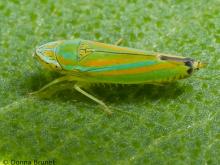
Species Types
Scientific Name
More than 3,000 species in North America north of Mexico
Description
The leafhoppers are a large and diverse family of sap-sucking, hopping insects. You can distinguish them from similar groups of hoppers by the hind legs, which have at least one row of small spines on the hind tibiae (“shins”).
Media
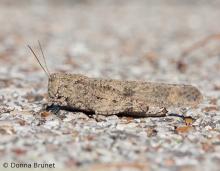
Species Types
Scientific Name
About 620 species in North America
Description
The short-horned grasshopper family includes many familiar jumpers. They are named for their antennae, which are relatively short compared to those in the "long-horned" or katydid group.
Media
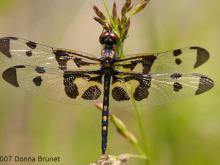
Species Types
Scientific Name
Species in the suborder Anisoptera
Description
Like damselflies, dragonflies have long bodies, two pairs of long, membranous, finely veined wings, and predaceous aquatic larvae. Dragonflies typically hold their wings stretched outward, horizontally.
Media
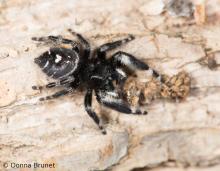
Species Types
Scientific Name
Phidippus audax
Description
The bold jumper, or white-spotted jumping spider, is fuzzy, makes jerky movements, jumps surprisingly long distances, and doesn't build webs. It usually has a black body with white, orange, or reddish spots on the abdomen.
Media

Species Types
Scientific Name
About 84 species in North America.
Description
Many blow flies are so shiny and colorful they’re called greenbottles and bluebottles. But pretty as they are, it’s hard not to be repulsed by their larval diets.
Media
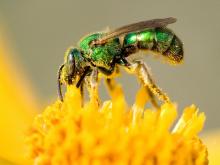
Species Types
Scientific Name
More than 500 species in North America north of Mexico
Description
Missouri has many species of halictid bees, or sweat bees. Some are solitary, but a number show different levels of social behavior. They're named for their attraction to perspiration, which offers them precious moisture and salts.
Media
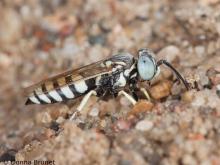
Species Types
Scientific Name
More than 1,200 species in North America north of Mexico
Description
Many species and genera of sand wasps occur in Missouri. They nest in the ground during summer. They are found in many habitats but most often in open, sandy areas along rivers.
Media

Species Types
Scientific Name
Species in the suborder Zygoptera
Description
Like dragonflies, damselflies have long bodies, two pairs of long, membranous, finely veined wings, and predaceous aquatic larvae that have extendible mouthparts. Damselflies typically hold their wings together, above the body.
Media
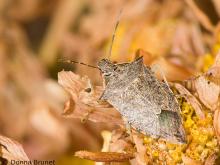
Species Types
Scientific Name
In North America, more than 200 species in 64 genera
Description
Stink bugs are shield-shaped insects that can smell really bad. This is a large family of true bugs known for producing a foul odor when harassed.
Media

Species Types
Scientific Name
Cotinis nitida
Description
The green June beetle is a common type of scarab beetle in Missouri. These large, metallic green beetles buzz loudly when they fly. They are attracted to ripe and rotting fruit and compost piles.
See Also



Media

Species Types
Scientific Name
Cisseps fulvicollis
Description
The yellow-collared scape moth is more often “orange-collared.” And whether you think it looks more like a firefly or a wasp, it’s still a moth!
Media

Species Types
Scientific Name
Nearly 150 species in North America north of Mexico
Description
Slim, delicate plume moths are instantly recognizable by their T-shaped silhouette, long legs, and muted shades of tan and brown. It can be hard to separate the various species.
Media

Species Types
Scientific Name
Pyrrharctia isabella
Description
Not many people know the adult Isabella tiger moth when they see one, but we’re all acquainted with its caterpillar, the woolly worm, or woolly bear.
About Land Invertebrates in Missouri
Invertebrates are animals without backbones, including earthworms, slugs, snails, and arthropods. Arthropods—invertebrates with “jointed legs” — are a group of invertebrates that includes crayfish, shrimp, millipedes, centipedes, mites, spiders, and insects. There may be as many as 10 million species of insects alive on earth today, and they probably constitute more than 90 percent all animal species.





















